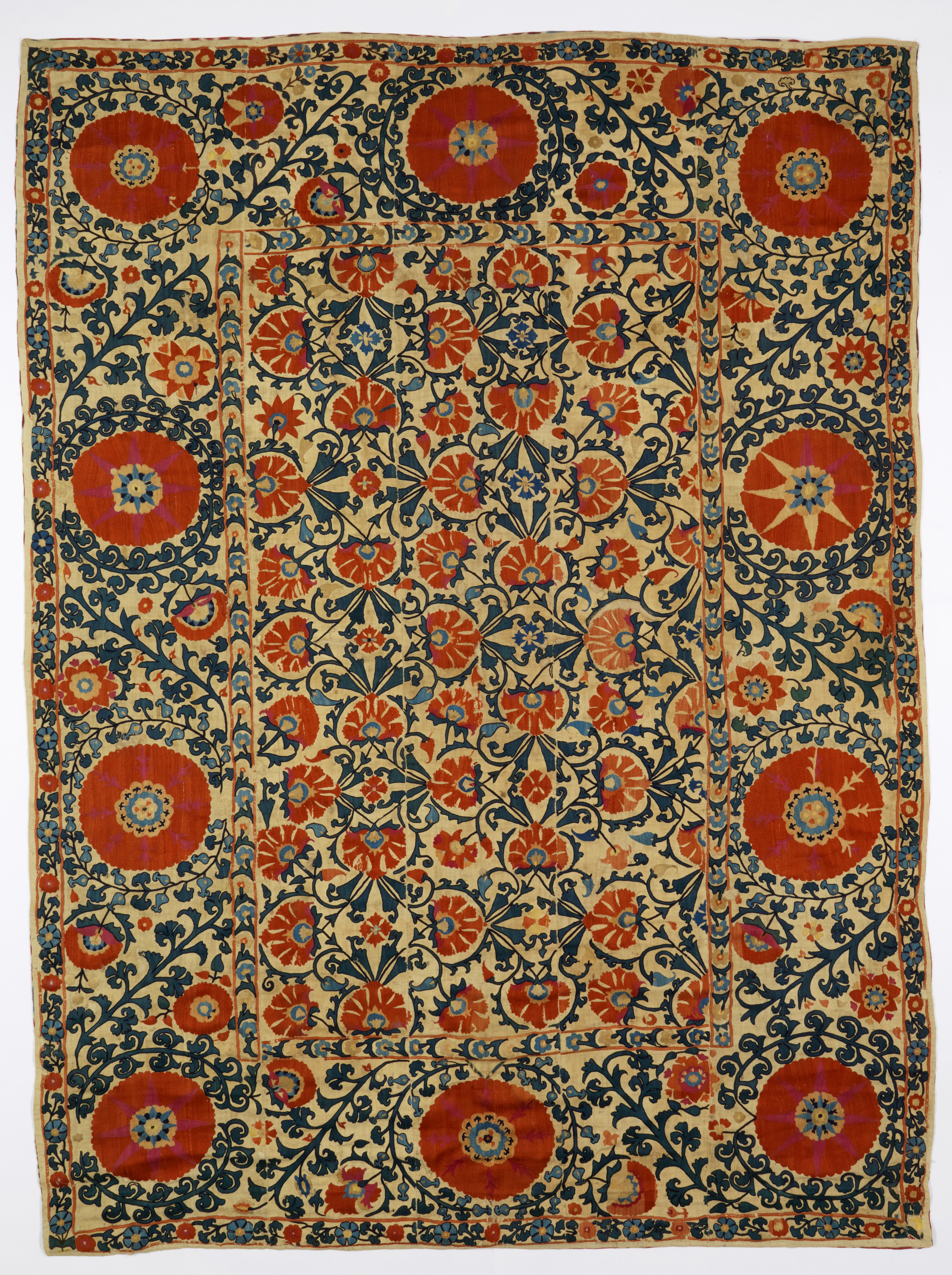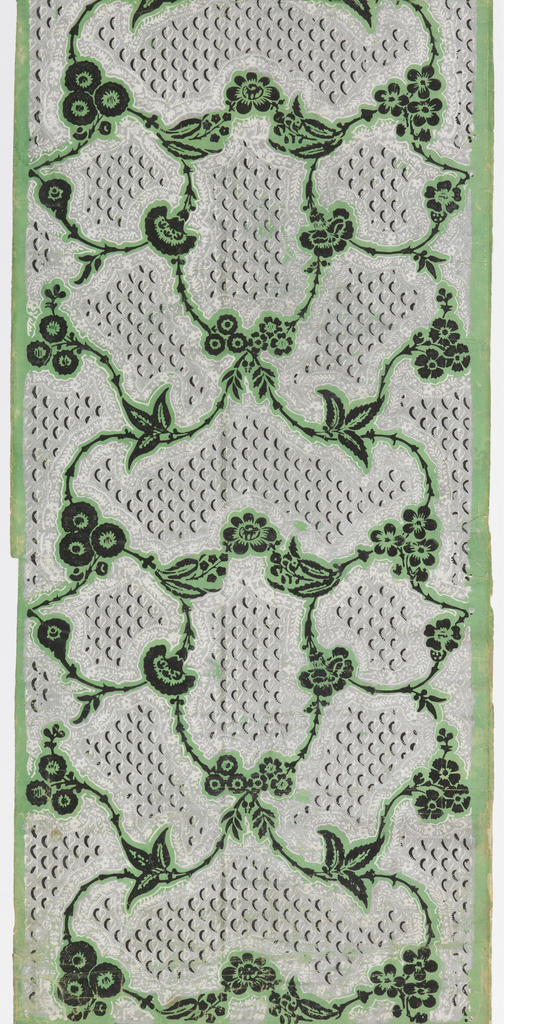Author: Jeffery McCullough Many surviving nineteenth-century crib quilts are evidence that it was more common to make a child-size quilt in colors and patterns that were popular for adult-size bed quilts, rather than in specific “baby” colors. An 1840-1860 crib quilt in the collection of Cooper Hewitt, Smithsonian Design Museum represents common coloration and a...
Suzani, meaning “of needle” in Persian, are large-scale embroideries central to Central Asian domestic culture. Young girls learned to sew at an early age, often beginning to work on textiles intended for their own marriage dowries. Suzanis were considered the most important textiles in a dowry. Indicators of skill and family wealth, they were status...
Wallpaper is a direct descendant of the elaborate tapestries that hung heavy on the walls of the wealthy since ancient times. Therefore, it is only natural that a significant portion of early wallpaper imagery closely correlates to patterns originally developed for textiles. This woodblock-printed paper is of English manufacture, dates to c.1765 and is clearly...


